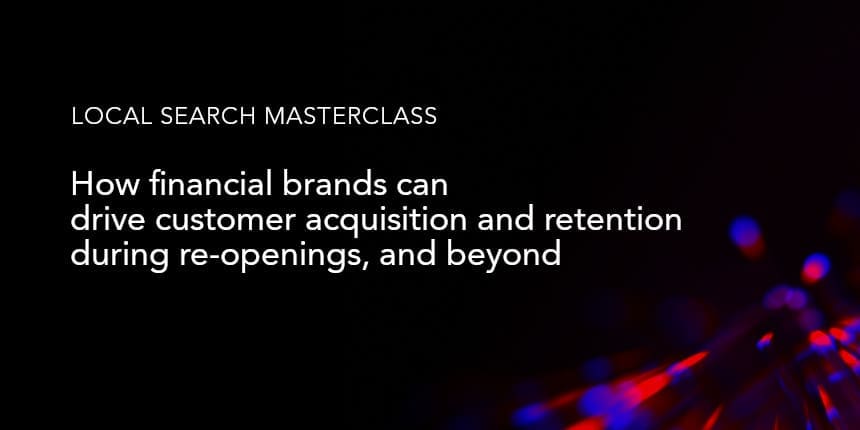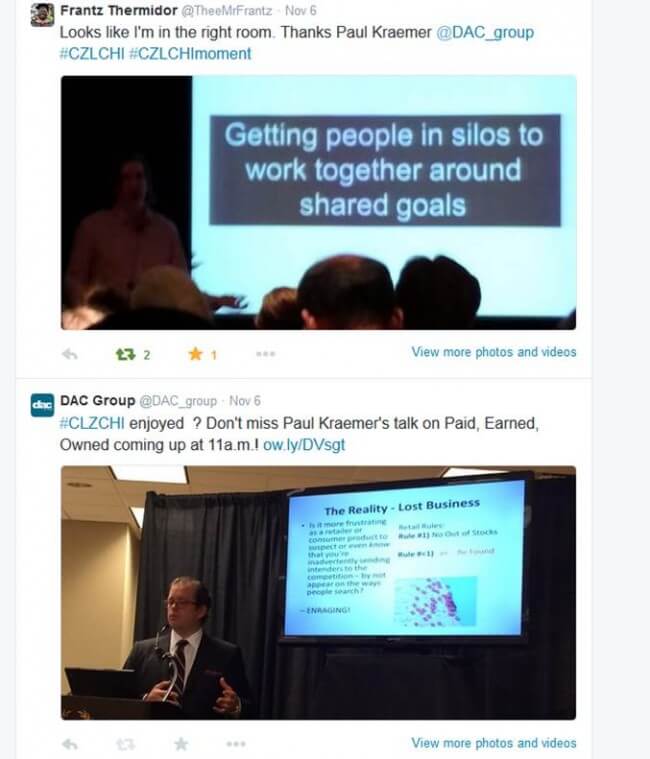
 On-the-fence-the-great-content-gate...
On-the-fence-the-great-content-gate... Recently a client of ours told me that they were planning to ungate the whitepaper resources on their website.
My content marketing mind freaked out!
Surely valuable content is worth at least an email address? Isn’t everyone used to gated content by now? What was the point of the content if not to generate leads?
But the more I thought about it, the less sure I was. Does it make more sense to ungate some content?
After my initial freak out, I started to think that it all comes down to the purpose of the content. Our client’s whitepapers were long-form, keyword rich content – the kind of stuff that Google loves to crawl. And you can’t get those SEO benefits with a content gate in place; at the end of the day, Google can’t index a gated pdf.
But think of the leads they’re missing out on!
Yet, for this company, they found the majority of leads from gated content to be junk. Users download whitepapers for all kinds of reasons, only one of which is because they’re interested in making a purchase.
Considering the SEO benefits of the content and the number of junk leads, it actually might not make a lot of sense to gate their whitepapers. But does that hold true for all content across all clients?

The argument for ungated content
Increase views
Back in 2013, renowned content marketer, David Meerman Scott, revealed research that showed ungated content got 20 times more views than gated content. That’s a 95% reduction in views when you gate content.
If the primary purpose of your content is to inform, educate or simply raise brand awareness, then views are one of your most important metrics. Sticking content behind a gate will severely limit your views, undermining the primary purpose of the content.
Whitepaper content also provides ample opportunity to make the business case for your solution. Case studies, research, and customer success stats – all combine to create an argument for making a purchase that works on both a logical and emotional level.
And remember: the longer they listen, the sweeter the pitch.
Search Engine Optimisation
As well as receiving more views once visitors are on your site, ungated whitepapers also get more people onto your site in the first place. Research consistently shows that long form content received more traffic than short form content.
Source: Hubspot
By gating a long, authoritative piece of content you restrict search engines’ ability to index, gaining you no love from the likes of Google. Slap the same content on your blog and you create something search engines can really get their teeth into.
Build trust with your audience
Let’s face it, when we drop our email address in to a gated content form, we know we’re signing ourselves up to receive email marketing from the company for as long as we both shall live. But who wants that sort of commitment?
The majority of businesses aren’t widely renowned for dispensing incredibly valuable, useful information for free through their blog, so they are less likely to get away with gating whitepapers.
You can, however, build up trust fast by offering useful, long-form content on your site for free. More people see it, read it, share it, and trust it…and by inference trust you!
Once this trust is built up over a year or two, then you can gate your content, confident that people will still trust you enough to hand over their email address.
The law of reciprocity
A founding tenant of content marketing, the psychological concept of reciprocity states that people are more likely to give you something if you give them something. It’s an urge – we feel almost guilty if we don’t offer something back when people give us something.
This can go either way when it comes to gating content. On one side of the fence, you could use the law of reciprocity to gather email leads in exchange for the gated content. On the other, providing this content for free would encourage other kinds of reciprocity…like making a purchase.

The argument for gated content
Creating an inbound engine
Not many businesses have the time or manpower to manually nurture every lead that comes through a website form. Some are junk, some aren’t ready to buy, and only a small few have any intent of making a purchase. Following up on all of these leads is not only a waste of time, it could actively harm your brand reputation with premature sales contact.
This is, essentially, the main reason our client wanted to ungate their content. But what if you could build a lead nurturing engine that does all of this work for you, qualifying leads while shuffling them down the sales funnel?
Automation is looked on with suspicion (and rightly so when it comes to channels like social media). But if you are smart about it, inbound automation can effectively operate with minimal manual intervention to both qualify and nurture leads.
The key word here is relevancy. If the user downloads a report on the state of SEO they are unlikely to be interested in a whitepaper on event marketing. They might, but your chances are pretty slim.
If you followed up their SEO report download with a blog about the best keyword research tools, you’ll likely see a much higher click-through rate. These clicks can then be recorded against their prospect profile, helping to build a picture of exactly where they are in the funnel, what they are interested in, and how engaged they are with your brand.
Combine this with a bit of lead forensics and social media research and you’ll have a good idea of who is looking at what content and why. Are they researching for their own blog or are they actually interested in your product? See what other pages they viewed on your website. How far down the funnel are they? Find out whether they are reading high-level content or the intricate details. Are they a key decision maker or do they need to convince someone else? Look them up on LinkedIn to find out.
Content is the oil that keeps the inbound engine running, but without an email address to tie all this information back to, you won’t be able to generate much insight.
Gating helps qualify leads
If people are really interested in you and your whitepaper they will give you their email address. If not then they’re probably not worth developing a relationship with anyway.
Views are great, emails are better
What’s better: having 2,000 people read your content or getting 200 email addresses? Even if 75% of those emails are junk, that still leaves you with 50 engaged and qualified leads.
Again, this depends on the primary purpose of your content. If the aim is to generate leads then gating seems an obvious solution. If it’s awareness then ungating will get more eyes on your branded content.
Ultimately you probably want your content to drive revenue, so gating at least some content is the most sensible option. It all comes down to the purpose of the content.

Optimising gated content
What all of these pros and cons fail to address is how gated content is presented. There are ways that a savvy content marketer can present gated content to help overcome some of the potential pitfalls presented above.
Landing pages
It will sound obvious to some, but it’s worth emphasising, every piece of gated content should have its own landing page. This is your sales pitch for the content, the benefits it will provide to the visitor, their entire reason for downloading it.
The approach is similar to other sales landing pages – it should be:
- Benefits led
- Provide insight into what will be gained
- Have a picture of the product (i.e. the front cover designed to look like a physical book)
- A clear and compelling call to action (CTA)
If you can include all of that in concise bullet point form above the fold, visitors should see the value in the content and be more than happy to hand over their email address.
Microconversions
The best calls to action aren’t just clear and compelling, they also ask for just a small step at a time, otherwise known as a microconversion.
If you read a CTA button on a landing page that read “Get Instant Access Now”, you might think that the report was lying just one click away. If, following your click, you were asked “Where shall we send your report” you are more likely to drop in your email address, or that of a colleague’s.
Compare that with a form sitting on the landing page itself – you already know that you are paying for the content with your email address as currency and therefore make an instant value judgement.
Reduce form size
As a rule of thumb: the longer the form, the higher the dropout rate. There are lots of A/B tests that show this to hold true. For example, a QuickSprout infographic shows that conversion rate increases by at least 10% by reducing the number of form fields from 6+ to just 3.
One way of doing this using the microconversions approach is by asking for an email address in the first instance and following this up with a few qualification questions, such as the size of their company and the industry sector. This makes the additional detail optional, but works on the basis that they’ve already come that far, why not continue.
Social adverts
Distributing and promoting your gated content is just as important as converting on the landing page. The ads need to be relevant to your target audience, concisely targeted to ensure maximum cost per acquisition (CPA), and continue the journey after the click.
So many pieces of gated content I see fall down in this final area – they create social ads on LinkedIn using wording and imagery that they think will grab the attention of the target audience, but then the landing page looks and sounds completely different.
If the landing page doesn’t relate to the ad copy or image then visitors will wonder whether they’ve reached the right page and you will experience a high bounce rate, driving up your CPA.
If you need to use different copy and images for different target audiences, then make sure to set up individual landing pages for each variation. A connected journey is key to gaining trust and gaining the conversion.

Other ways to gate content
There are other ways besides landing pages to gate your content. It’s always worth considering whether a landing page gate is the best approach or whether you could gain emails in another way.
For example, if a member of your team is a respected contributor on LinkedIn groups, they may be able to offer to email the whitepaper to other group members. They are often happy to share their work email addresses on closed LinkedIn groups, particularly if they will be sent a useful whitepaper.
Email addresses can then be very easily tied to job roles in specific companies, making your follow up research a doddle.
Upsell in ungated content
While gated content is the most straightforward way of gaining email addresses through your whitepapers, it is potentially more valuable to include upscaling options within the whitepaper itself.
For example, many business authors write ebooks that they give away through the Amazon Kindle store. The books are advertised as containing a number of free tools that would otherwise be charged for. However, in order to unlock that further content the reader must…you guessed it…enter their email address.
The benefit of this approach is that you know the people that you receive the email addresses of have actually read your content and engaged with it, thus qualifying them even more so than a web form.
Want more like this? Get Ambergreen updates to your inbox.



